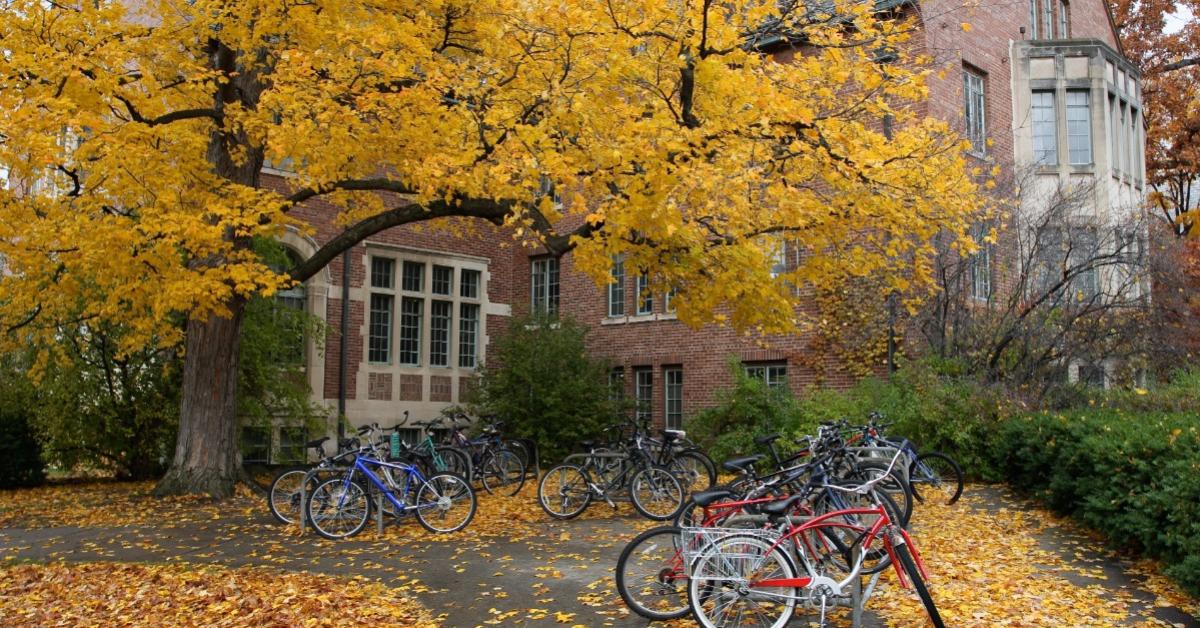
I have recently written about the cultural, political, and ideological problems that contribute to the decline in higher education, but colleges also suffer from long-standing institutional shortcomings.
Simply put, the term “higher education” is, in many ways, a misnomer, as the university system is not designed to produce quality educational experiences. This is due to three major problems: extreme institutional stickiness, the lack of division of labor, and tenure.
Universities trace their origins back to the Middle Ages, when they were appendages of the church. Books were scarce in medieval Europe, and this prevented all but the wealthiest students from having their own copies of the books they were taught from. The book scarcity compelled professors to teach by reading directly from the book, adding their own commentary throughout, which became known as “glossing” the text. This is the basis for the modern lecture that remains the primary method of college instruction today.1
There is a place for the college lecture—as a history teacher, I can appreciate the difficulty of replacing them entirely—but it is widely accepted today that lectures are the least effective method of teaching. To be sure, not every professor leans on the lecture. Many courses, at least in the humanities, do incorporate discussion, often devoting one day a week to discussing short reading assignments. Yet lectures are still heavily used, not because they are the only or best means of educating students, but because they are familiar to us.
Part of this problem stems from the lack of pedagogical training that graduate students receive before becoming professors. In fact, it is common practice to assign graduate students classes to teach as a way of compelling them to learn the material, as is often the case with economics PhD students who earned their undergraduate degrees in mathematics (Peter Klein discusses this issue during his experience at Berkeley here). While lecturing may be the best method of learning for the teacher, we might question the value of an undergraduate course being taught by professors who do not themselves know the material.
The lack of pedagogical training is also related to the absence of any division of labor in the university system. Graduate students are trained to be researchers, not educators, despite the fact that the vast majority of them will land jobs at teaching universities, where they will have large course loads and little research time compared to their counterparts at prestigious research institutions. It hardly seems rational to expect good educational outcomes from people who become qualified to teach at the highest level of the educational system by completing a training program that provides virtually zero pedagogical training.
Moreover, regardless of where professors land jobs, their responsibilities are generally divided into three categories of responsibility: teaching, research, and administrative contributions to the department. Often the best educators in a department end up taking on administrative functions, in which they usually have little interest or ability, in exchange for a lighter teaching load.
This causes further problems for both undergraduate and graduate students, who are expected to seek guidance on their college trajectory from professors who are fulfilling their administrative obligations a year or two at a time, until another professor takes over, with no incentive to learn the job. The result is misguided advice and inconsistent answers to common questions from professor to professor. So egregious was this problem during my graduate experience at the University of Florida that my cohort eventually learned to take all our questions to one student whose advisor seemed to be the only faculty member capable of providing reliable information.
But if most college professors spent the majority of their time teaching and administrating, why do our graduate programs focus almost wholly on research training? Scholarly publications are the source of prestige in the university system, and published research remains the primary basis for hiring at most colleges, even those that are largely teaching universities (though this is less true for liberal arts and community colleges). University departments are happy to continue supporting even the most abysmal teachers as long as they show productive scholarly output.
The problem is that the expectation at all levels of higher education, from research universities to small teaching colleges, is for all professors to share a degree of the teaching, administrative, and research burdens, regardless of where their particular talents lie. In any other industry, we generally expect to see work divided according to ability—let the best teachers teach, the best researchers research, and the best administrators administrate, rather than dividing their energies and swapping out administrative responsibility every year or so. Education is not immune to the advantages of specialization, but the institution of higher education remains stubbornly resistant to it.
The problem is compounded by the tenure system. Tenure is the only reliable means of securing permanent employment at most colleges, so professors understandably prioritize the aspects of their jobs that are most valued in their tenure portfolios. Again, we see research as the top priority at nearly all tenure-granting institutions, but even administrative responsibility weighs more heavily than teaching contributions for tenure decisions.
The result is predictable. The tenure system, by rewarding teaching the least of all professorial duties, disincentivizes the development of good educators. Even professors who enjoy teaching and are naturally gifted pedagogues must often direct their efforts elsewhere due to career priorities. There are many wonderful instructors who are mediocre researchers at best and many quality scholars who are atrocious educators, but the tenure system is largely designed to keep the latter in the classroom, rather than the former.
Once professors achieve tenure, they are further protected in poor performance. The idea behind tenure is to protect academic freedom, but the culture wars have shown that there are plenty of ways to purge tenured professors from faculty positions when they hold “unacceptable” views, as Michael Rectenwald’s experiences illustrate.
Rather, the tenure system operates to protect ineffective educators, radical scholar activists (who adhere to the approved opinion on political issues), and disengaged faculty members who resist retirement. To the last point, I once had an elderly economics professor who refused to retire (despite the department’s wishes) open the class by instructing us on what to do if he passed out during the lecture. Just as teachers’ and police unions do more to protect the rotten apples than the good, the tenure system rewards and protects poor educators.
This is all to say that the abysmal state of college education is not merely a matter of public policy and ideological homogeneity, though these are certainly important factors. The very institution of higher education is structured to produce poor educational outcomes, and there is little incentive to improve. Fortunately, there are still many wonderful professors, who are largely driven by their personal love of teaching, but until the institutions themselves change, people who are simply searching for personal edification will likely have more success by reading books or taking noncredit online courses, which are often free and always cheaper than college classes with bloated tuition costs. But it is time to stop treating a “college degree” as a proxy for genuine education.
1. Norman F. Cantor, Civilization in the Middle Ages (New York: Harper Perennial, 1994), 439–40.








